Detection of Bacteria on Metal Microarrays
Shaun Williams, PhD
Research Goals
- Determine how far the detection limit could be pushed
- how small of a bacterial number density can be detected.
- Record absorption spectra for a variety of bacteria
- Begin building a bacteria spectral library
First Mesh of the Summer
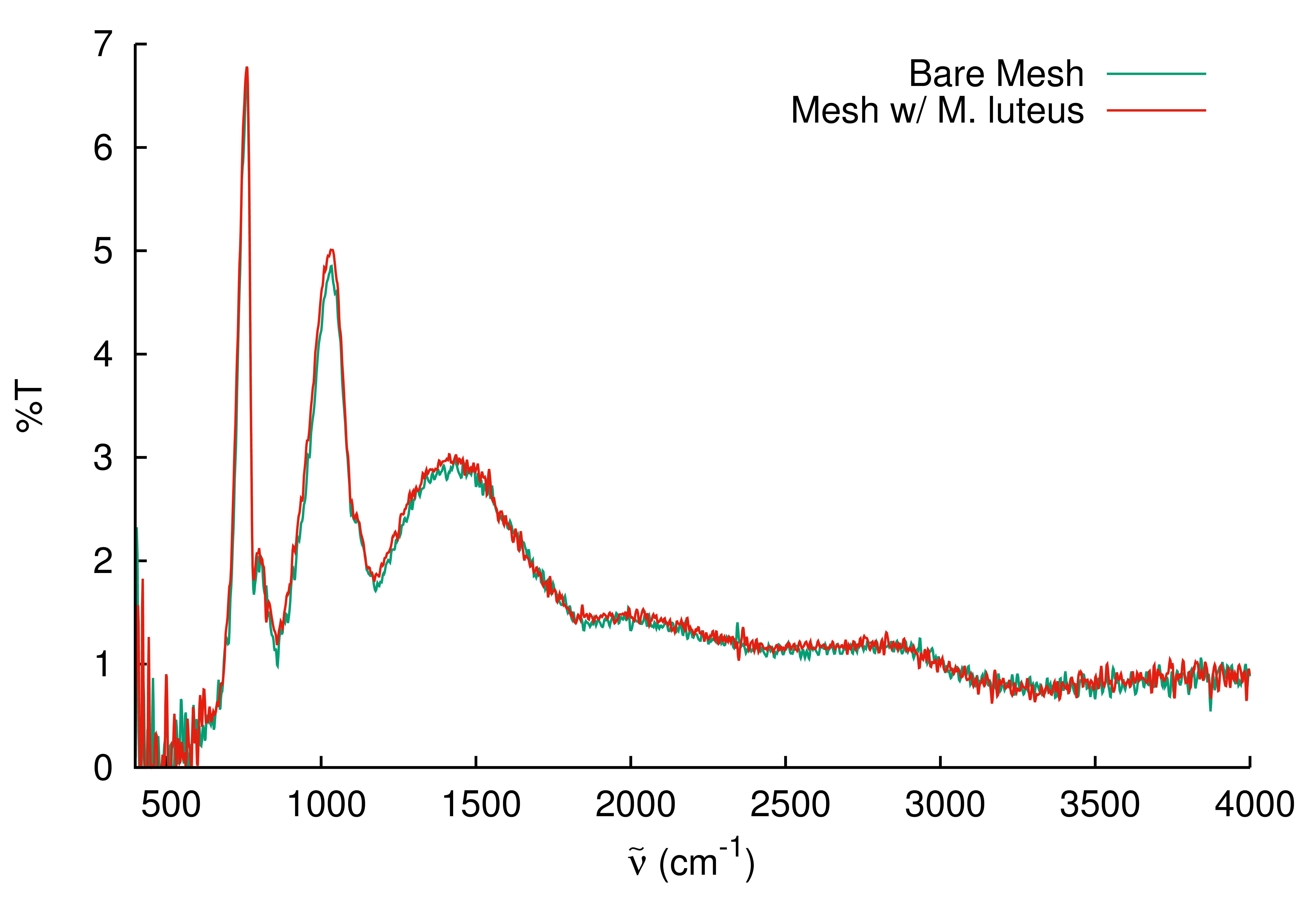
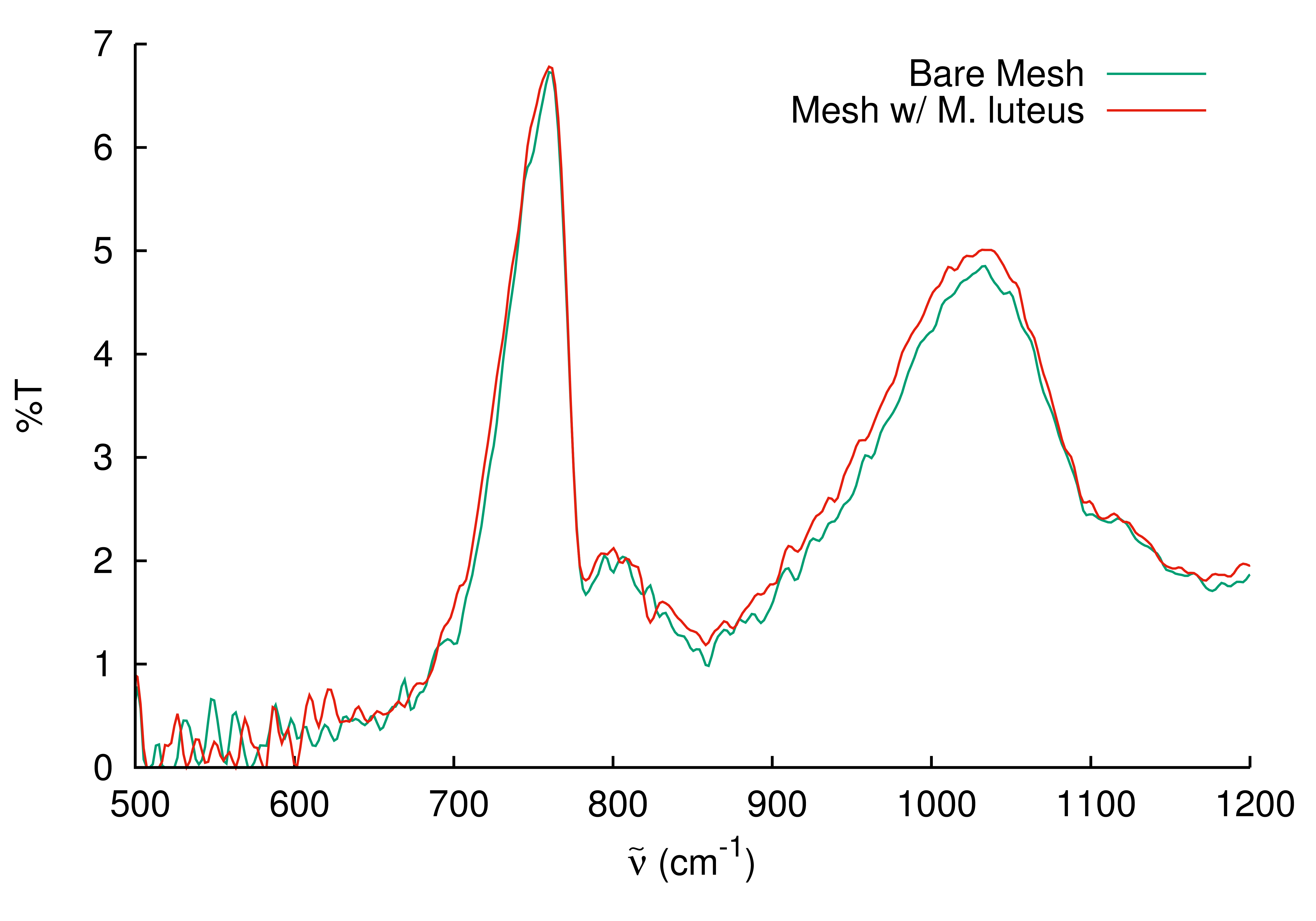
Reproducibility Test
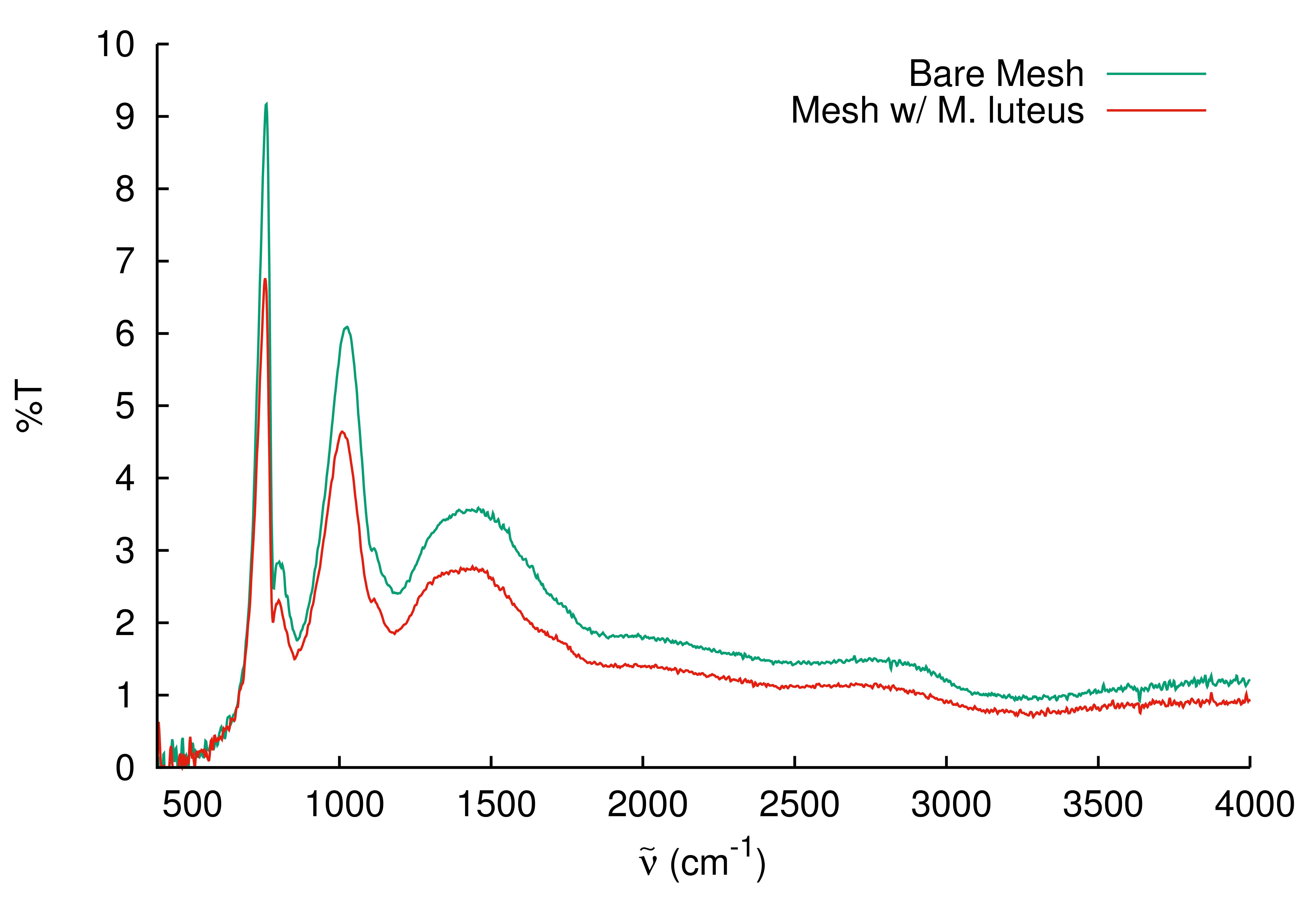
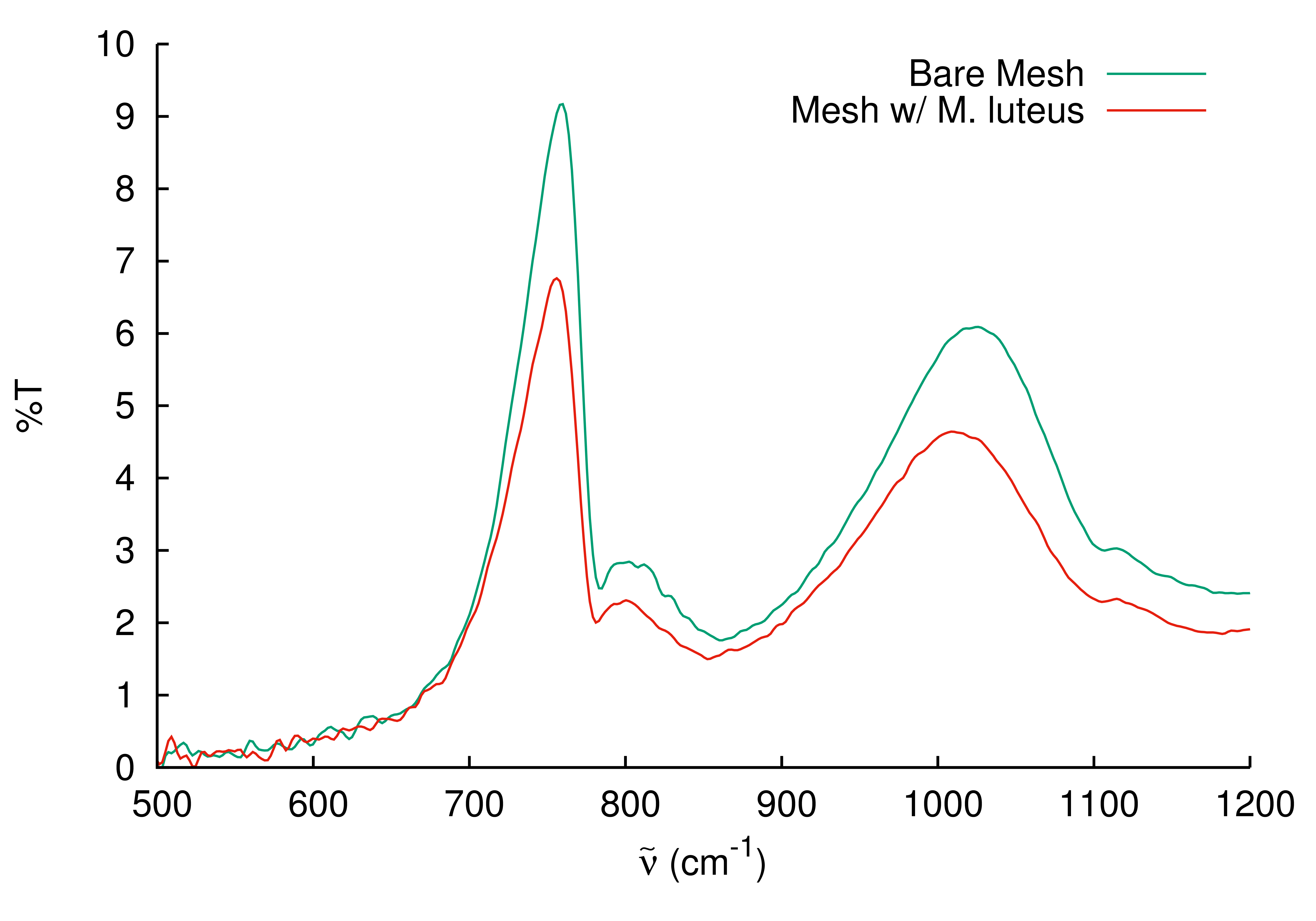
A Big Problem
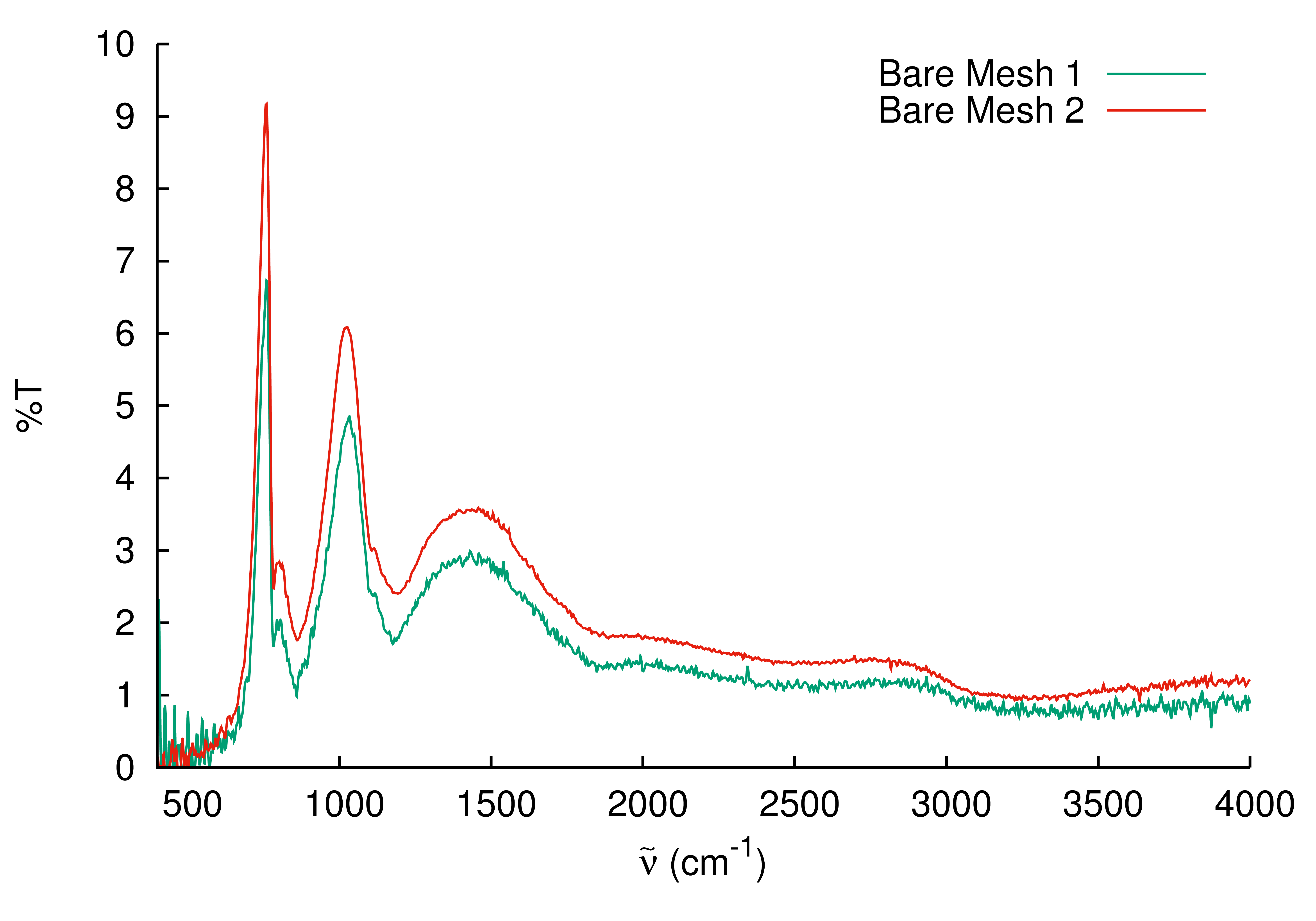
- Same original mesh dimensions
- Same deposition time
- Time was measures with wristwatch
- Accurate to at best a half-second
- Better control of deposition time is clearly needed
A Big Problem
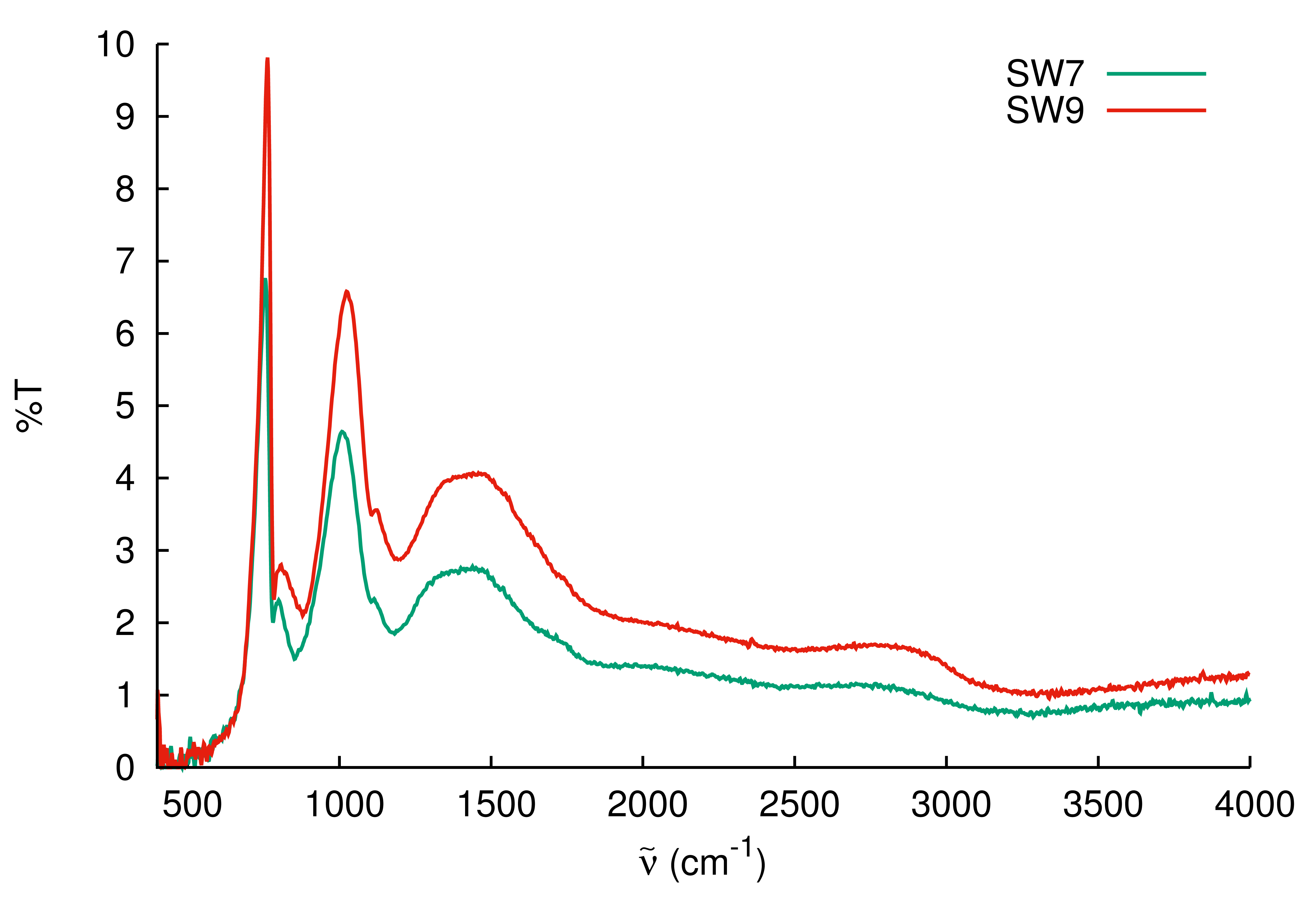
- Same original mesh dimensions
- Same deposition time
- Time was measures with wristwatch
- Accurate to at best a half-second
- Better control of deposition time is clearly needed
A Big Problem
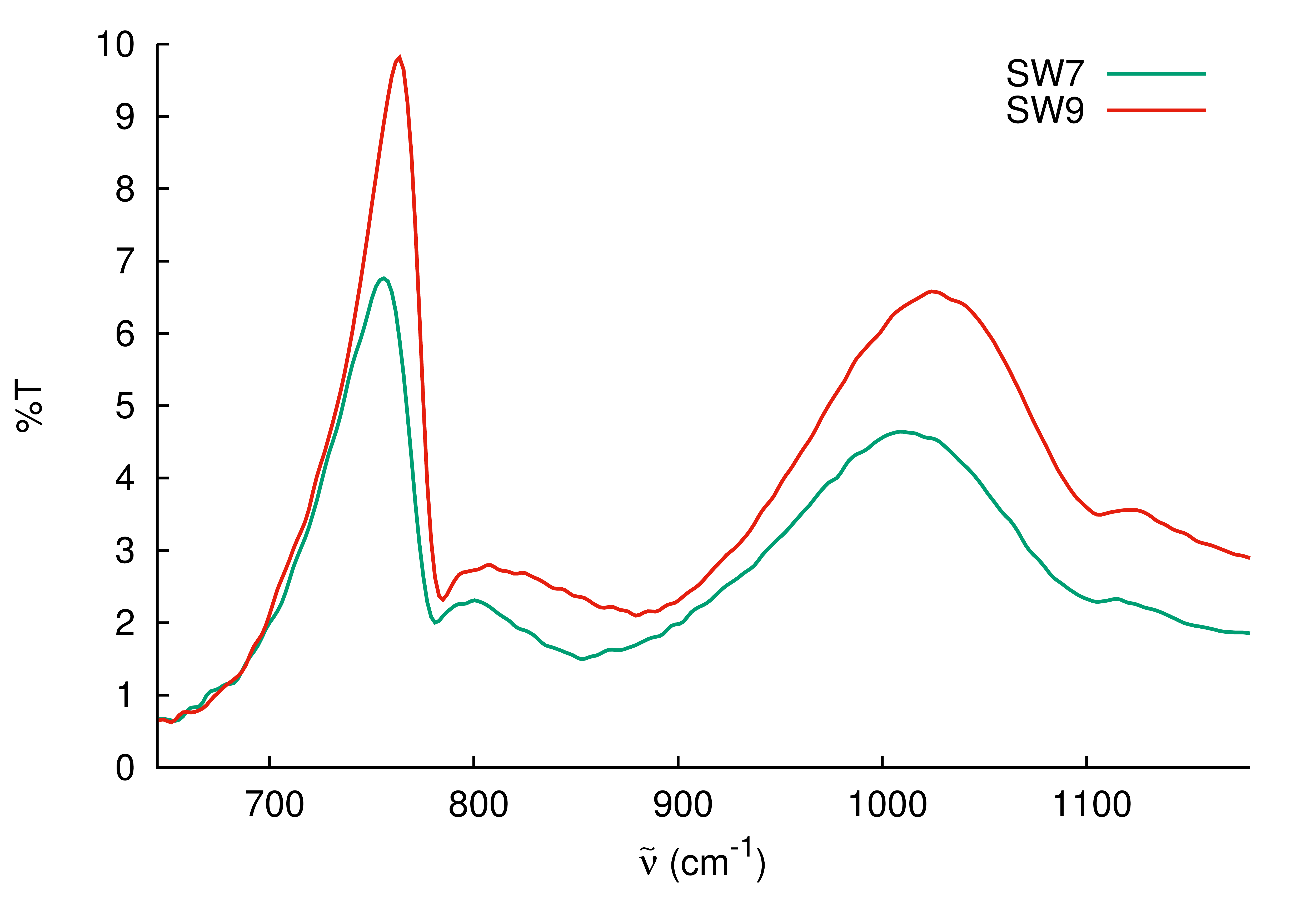
- Same original mesh dimensions
- Same deposition time
- Time was measures with wristwatch
- Accurate to at best a half-second
- Better control of deposition time is clearly needed
Design of a Timer

- Arduino electronic control board (bottom in image)
- Hand coded
- Time accuracy of 1 millisecond
- Control breadboard (middle in image)
- Power controller (top in image)
- Program triggers this on an off as appropriate
Comparison of Mesh with New Timer
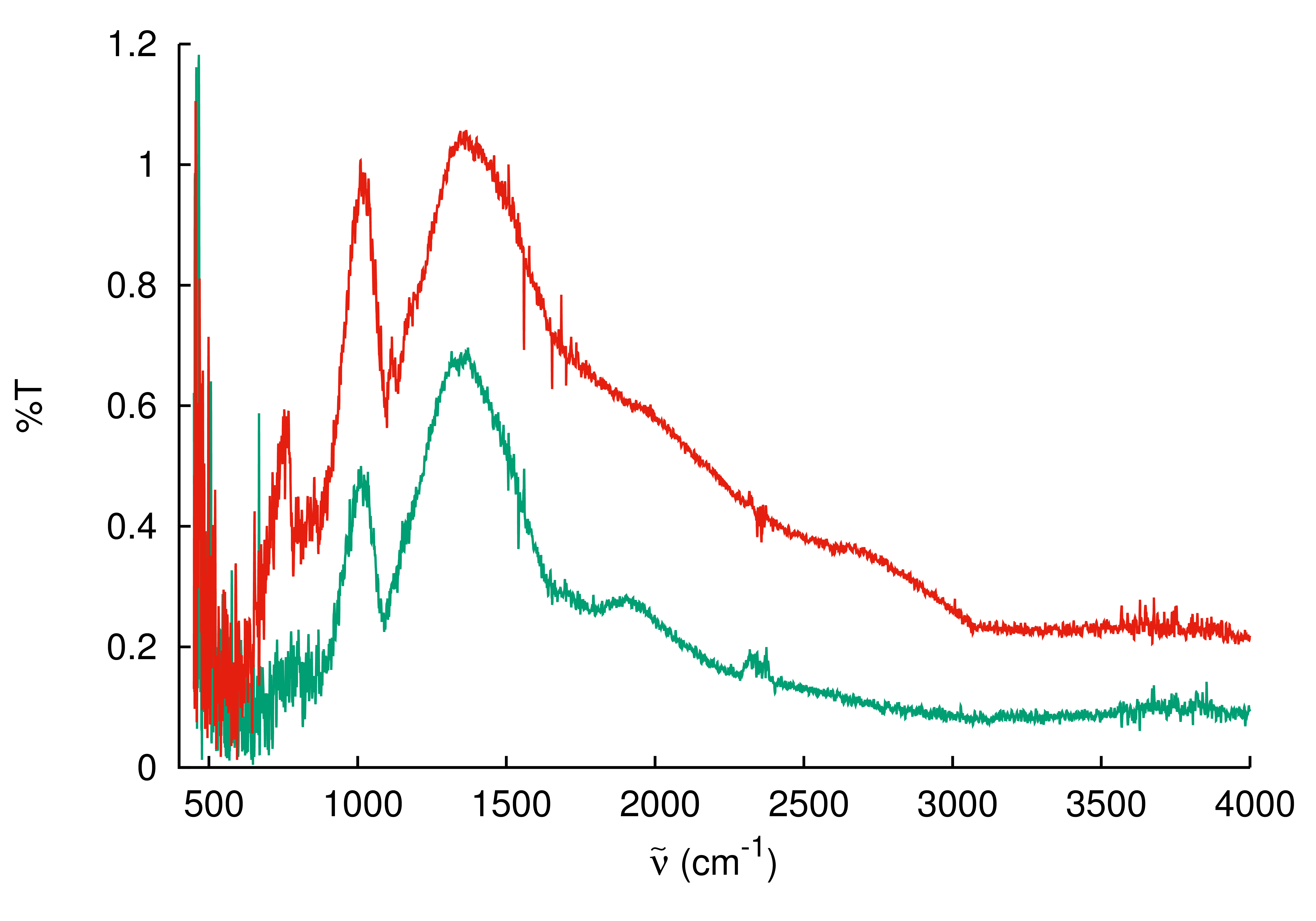
- Both deposited for 6 seconds (6000 ms)
- How can this difference be explained?
How Big is this Difference
- This difference isn't as big as it seems compared to the original nickel mesh
- The overall dominant peaks at \(\sim 750\,\mathrm{cm}^{-1}\) has a %T of ~70% in the original nickel mesh.
- This amounts to percent changes of 99.1% and 99.9% respectively in %T.
- The dominate peak at \(\sim 1450\,\mathrm{cm}^{-1}\) has a %T of ~7% in the original nickel mesh.
- This amounts to percent changes of 84% and 90% in %T.
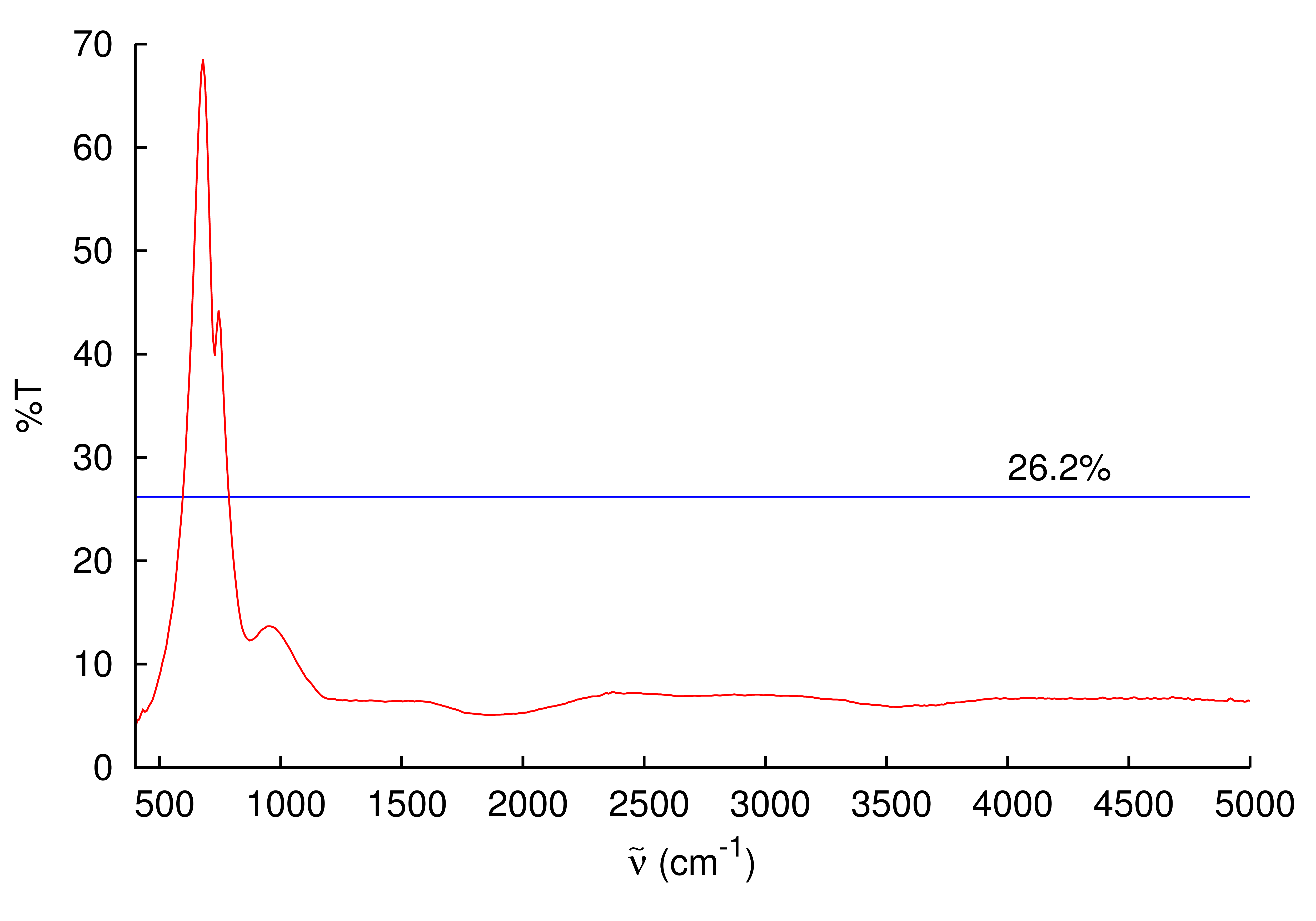

Explanation of the Differences
- Let's compare the surface area of the mesh in these two case.
- Green spectra: \(0.0195\,\mathrm{in}^2 = 0.126\,\mathrm{cm}^2\)
- Purple spectra: \(0.0272\,\mathrm{in}^2=0.175\,\mathrm{cm}^2\)

- The distance between the anode (the mesh) and the cathode is approximately \(0.102\,\mathrm{in}=2.59\,\mathrm{mm}\) during deposition and the potential difference between the two is \(10.0\,\mathrm{V}\).
- This yields an electric field strength between the anode and cathode of \(3860\,\bfrac{\mathrm{V}}{\mathrm{m}}\) or \(3.86\,\bfrac{\mathrm{kV}}{\mathrm{m}}\).
- Hypothesis: Larger surface area means that the maximum electric field strength is in a larger volume of the solution. Therefore, more deposition.
First Bacteria Run with Mesh Created with New Timer
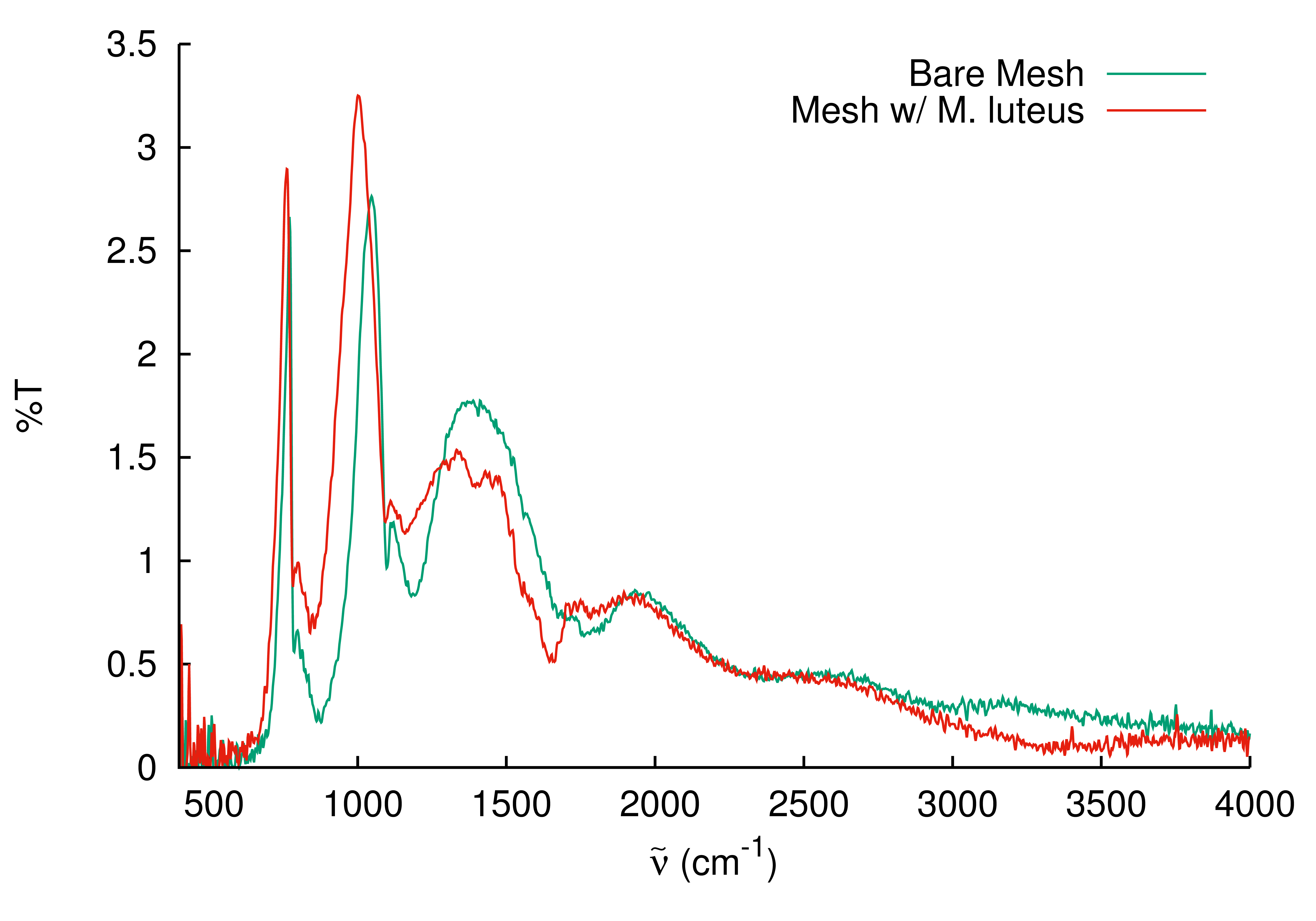
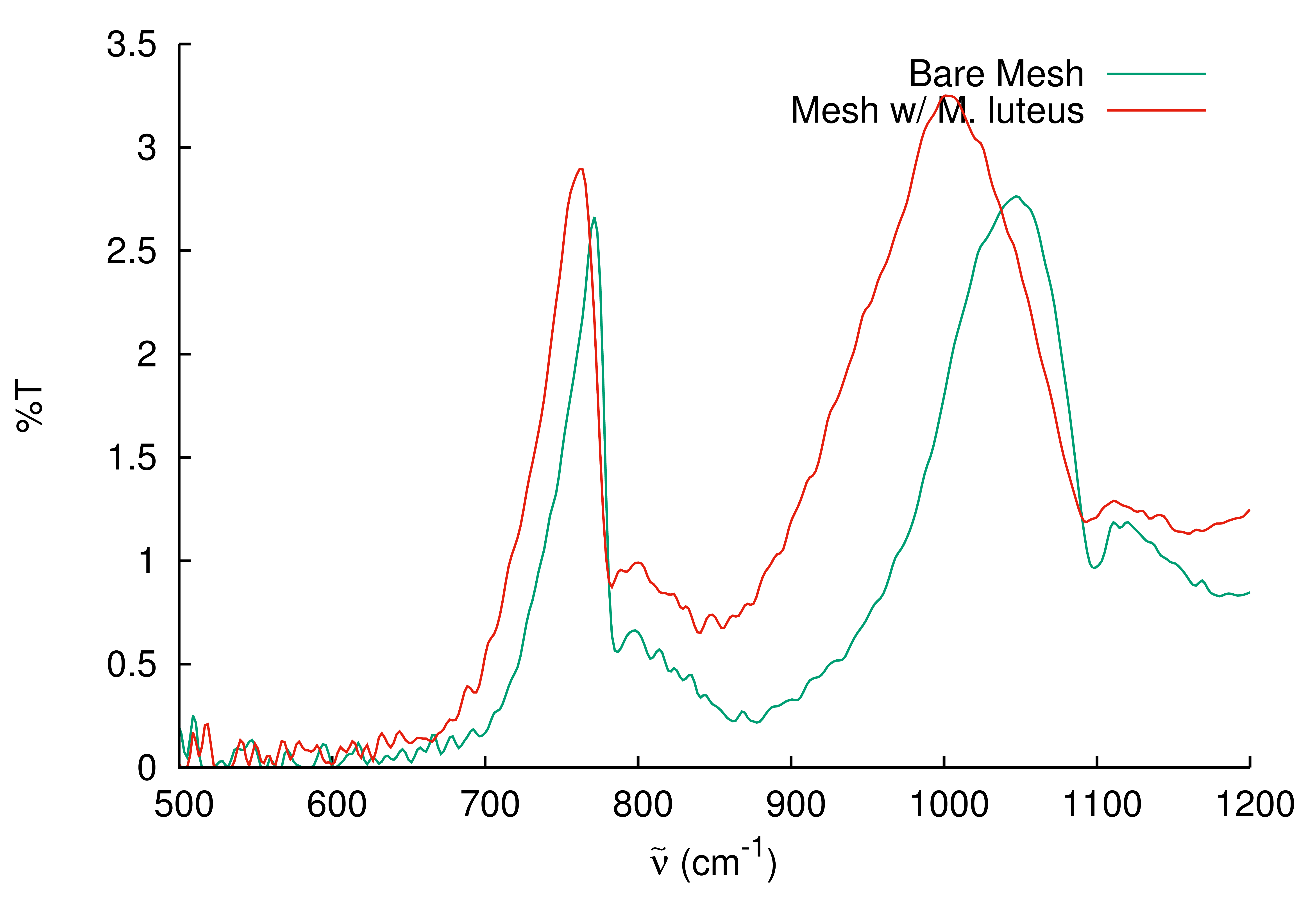
Spectrum of Micrococcus luteus
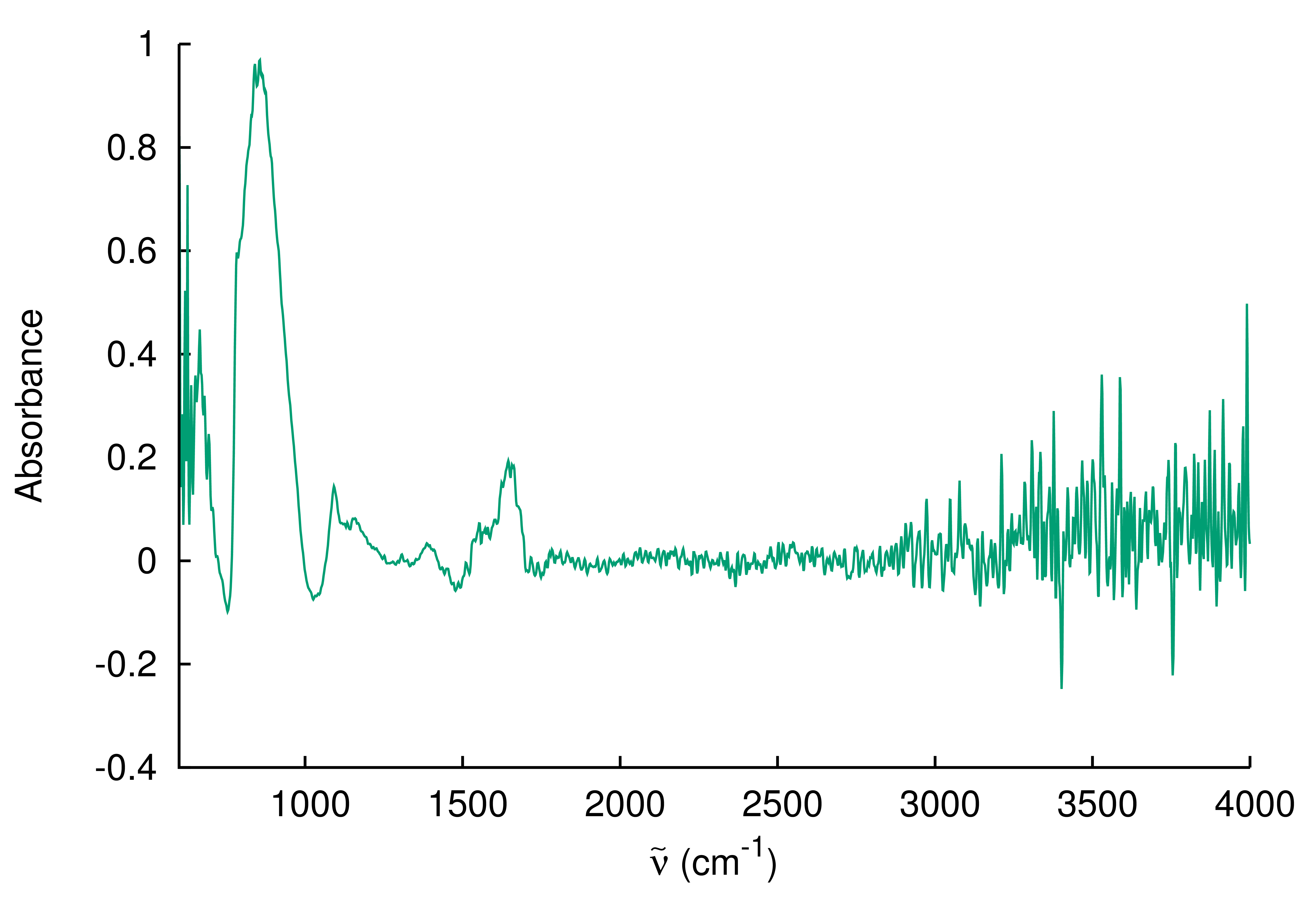
- A program was written that allows for the automated removal of the background spectrum
- The program eliminated the need to extract the background point-by-point, spectrum-by-spectrum.
Future Work
- Further improve the transmission-to-absorption program to further eliminate artifacts.
- Push the detection limits to see how small an amount of bacteria can be detected.
- Analyze as many bacteria as possible.
/